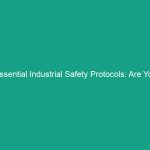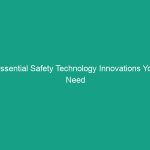Good Morning Team!
Today, we are going to discuss an important topic that directly impacts our Workplace Safety: Essential Compressed Air Safety: Nozzles Guidelines to Avoid Risks. Understanding how to handle compressed air safely is crucial for our daily operations and overall well-being.
Compressed air is commonly used in many industries for tasks like cleaning, powering tools, and inflating objects. However, if not managed properly, it can pose serious risks. Let’s dive into the details to ensure we all stay safe while working with compressed air.
Understanding Compressed Air Safety
Compressed air safety refers to the practices and Procedures that minimize risks associated with the use of compressed air systems. These systems can generate significant pressures that, when misused, can lead to severe injuries or even fatalities.
Many employees might think that compressed air is safe as long as it is used properly. However, misconceptions can lead to dangerous situations. For instance, using air to clean debris off clothing can lead to air embolism—a potentially deadly condition.
Key Hazards, Risks, and Safety Considerations
Let’s talk about specific Hazards associated with compressed air and nozzles:
- Air Injection Injuries: The high pressure can force air into the skin or bloodstream, leading to serious injuries.
- Noise: Compressed air tools can generate high noise levels, leading to hearing damage if proper hearing protection is not used.
- Flying Debris: Air can propel dust, dirt, and small objects at high speeds, posing a risk of eye injury or cuts.
- Loss of Control: Improper use of air nozzles can lead to the loss of control of the tool or the object being worked on.
Ignoring these hazards can lead to real-world consequences, such as injuries that require medical attention, lost workdays, or worse. This is why understanding and following safety protocols is essential.
Best Practices, Procedures, & Actionable Advice
Here are some Best Practices to follow when using compressed air and nozzles:
1. Use Proper Nozzle Design
Ensure that air nozzles are designed to minimize the risk of injury. For instance, a nozzle with a lower pressure outlet can prevent air injection injuries.
2. Maintain Safe Distances
Always keep a safe distance when using compressed air to clean surfaces. This helps to avoid potential injury from flying debris.
3. Utilize PPE
Always wear appropriate Personal Protective Equipment (PPE), including:
- Safety Goggles to protect your eyes from airborne particles.
- Hearing protection to guard against noise.
- Gloves to protect your hands from sharp objects.
4. Never Use Compressed Air for Cleaning Yourself
Do not use compressed air to blow dust off clothing or skin. Instead, use a brush or a vacuum to remove debris safely.
5. Regular Equipment Inspection
Inspect your compressed air system regularly for leaks or damage. Address any issues immediately to ensure safe Operation.
6. Training and Awareness
Participate in regular safety Training sessions to stay updated on Best Practices and guidelines for using compressed air safely.
Regulations, Standards, and Compliance
Understanding the Regulations that govern compressed air use is crucial. The Occupational Safety and Health Administration (OSHA) has established Standards regarding the safe use of compressed air. Compliance with these regulations not only ensures safety but also protects our company from potential legal issues.
It is important to be aware of the following standards:
- osha Standard 1910.242(b): This standard specifies that compressed air should not be used for cleaning purposes unless the pressure is reduced to less than 30 psi.
- ANSI Z87.1: This standard outlines the requirements for eye and face protection in the workplace.
Abiding by these standards is not just about compliance; it is about ensuring our safety every day.
Employee Engagement & Discussion
Now, let’s open the floor for discussion. Here are some questions to think about:
- Have you ever encountered a safety issue while using compressed air? How did you handle it?
- What Safety Measures do you think are most important when using compressed air?
Feel free to share your experiences or any suggestions you might have! Your input is valuable in creating a safer work Environment.
Conclusion & Key Takeaways
To sum up, understanding and implementing essential compressed air Safety Guidelines is critical in preventing accidents and injuries. By following best practices, maintaining compliance with safety regulations, and engaging in open discussions about safety, we can create a safer workplace for everyone.
Let’s commit to prioritizing safety in our operations. Thank you all for your attention and for your dedication to keeping our workplace safe!


